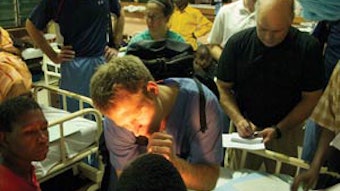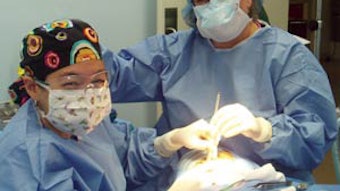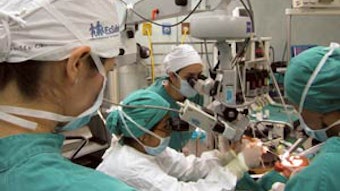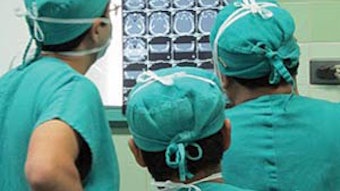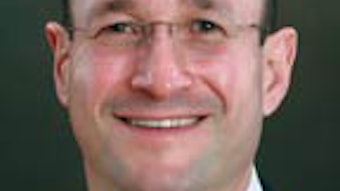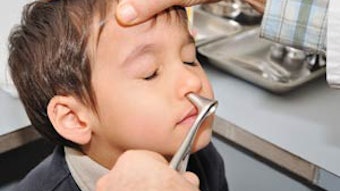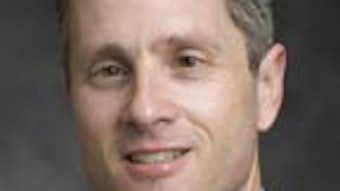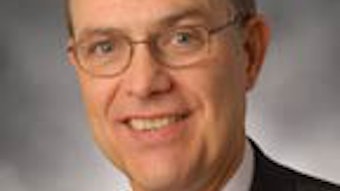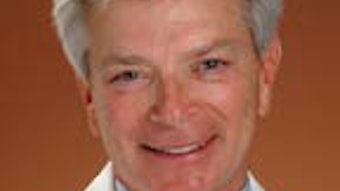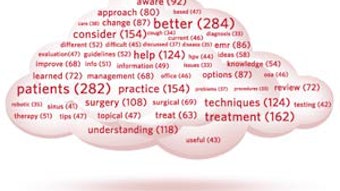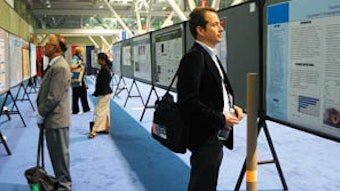Accountable Care Organizations: Aligning Quality and Cost
Rahul K. Shah, MD, George Washington University School of Medicine, Children’s National Medical Center, Washington, DC If you have not heard about Accountable Care Organizations (ACOs), consider yourself fortunate. Broadly speaking, ACOs are partnerships between hospitals and physicians (and other providers) to manage the clinical care of a specified population. We have seen a lot of information in the media recently regarding ACOs because they are a focus of recent legislation; The Affordable Care Act attempts to align patient, financial, and quality issues with outcomes. Within healthcare reform, ACOs are charged with “manag[ing] and coordinat[ing] care for Medicare fee-for-service beneficiaries.”1 There are financial implications in ACOs in that the shared savings are passed on to the ACOs and presumably to members of such. The discussion about ACOs has myriad points to consider: those of the patient, the payer, the physician, the community served by the physician, and the ACO organization/governance itself. As there are several pertinent contentious issues, there is a plethora of literature on this topic in various forms of media. There exist issues with the governance of ACOs as well as the concept that the ACO functions as a single governing unit. There are significant legal issues that ACOs must contend with, especially when they are attempting to collectively align interests; this runs into issues regarding anti-trust. Many organizations that are interested in becoming an ACO or joining an ACO may not have the proper legal, information technology, and leadership infrastructures to meet the required key competencies to be successful. You might ask, what is the need for ACOs? The concept of ACOs is a response to the hypothesis that when all stakeholders have a vested financial interest in the long-term care of the patient, then not only will the care and quality improve, but there will be financial savings as well. The end result of this organization is to improve the quality of care in a community and do this in an economically sensible paradigm. However, we all practice in significantly different community populations, so great care will need to be taken to ensure that when comparing quality outcomes, we are comparing apples to apples. Despite the legislation and the discussions regarding the role of ACOs, there is not much discussion and literature devoted to the role of the surgical subspecialist in such an organization. For otolaryngologists, there exists considerable concern as we are a very small specialty that treats a significant volume of patients and disease burden. What is unclear is the question: Do all specialists need to be formal partners of the ACOs or can certain specialists be retained to deal with a specific disease burden for the population (e.g., cardiologist, endocrinologist)? Ultimately, this answer will most likely lie within which quality metrics are reported and the role that otolaryngologists play in those metrics. For example, I would surmise our role would be limited if the quality metrics are all on acute myocardial infarction outcomes; however otolaryngology would be central to the discussion if metrics such as quality of life post-treatment for upper aerodigestive tract cancers are those that are benchmarked. As such, otolaryngologists may opt out of the ACOs, but the concern may be that if private payers all migrate to such a model, then the otolaryngologist would have an issue sustaining his practice. An additional problem for otolaryngologists is that many of our members are in small group practices, and not all are using the electronic medical record. The successful creation of ACOs is predicated upon certain characteristics existing in practices. If these practices do not have the relevant or necessary “hard-wiring,” they are inevitably not going to be able to compete within an ACO model. It is very hard to be dismissive of ACOs. The concept is alluring: to align all the stakeholders around the core objective of showing demonstrable gains in quality with cost savings and the potential to share in such savings. However, the operation of such for surgical subspecialists is fraught with issues regarding governance, scope of practice, and economics. It is much easier, potentially, within the primary care realm to make the business case for ACOs; however, many anticipate that for surgical specialties, it will be difficult. As ACOs evolve and if the legislation persists, otolaryngologists will be pressed to be a part of these new reimbursement and quality delivery mechanisms or will need to show that we can survive as pure consultants, outside of such a realm. Many believe that one of the important factors will include the definitions of the quality outcomes that will be measured, our role in the treatment of these chronic disease states, as well as the eventual governance of ACOs. Nevertheless, from patient safety and quality improvement perspectives, ACOs hold promise. However, there is much work and clarification to be accomplished prior to delivering on the hope. References Kastor JA. Accountable Care Organizations At Academic Medical Centers. NEJM February 3, 2011. We encourage members to write us with any topic of interest, and we will try to research and discuss the issue. Members’ names are published only after they have been contacted directly by Academy staff and have given consent to the use of their names. Please email the Academy at qualityimprovement@entnet.org to engage us in a patient safety and quality discussion that is pertinent to your practice.

George Washington University School of Medicine, Children’s National Medical Center, Washington, DC
If you have not heard about Accountable Care Organizations (ACOs), consider yourself fortunate. Broadly speaking, ACOs are partnerships between hospitals and physicians (and other providers) to manage the clinical care of a specified population.
We have seen a lot of information in the media recently regarding ACOs because they are a focus of recent legislation; The Affordable Care Act attempts to align patient, financial, and quality issues with outcomes. Within healthcare reform, ACOs are charged with “manag[ing] and coordinat[ing] care for Medicare fee-for-service beneficiaries.”1
There are financial implications in ACOs in that the shared savings are passed on to the ACOs and presumably to members of such.
The discussion about ACOs has myriad points to consider: those of the patient, the payer, the physician, the community served by the physician, and the ACO organization/governance itself. As there are several pertinent contentious issues, there is a plethora of literature on this topic in various forms of media. There exist issues with the governance of ACOs as well as the concept that the ACO functions as a single governing unit. There are significant legal issues that ACOs must contend with, especially when they are attempting to collectively align interests; this runs into issues regarding anti-trust. Many organizations that are interested in becoming an ACO or joining an ACO may not have the proper legal, information technology, and leadership infrastructures to meet the required key competencies to be successful.
You might ask, what is the need for ACOs? The concept of ACOs is a response to the hypothesis that when all stakeholders have a vested financial interest in the long-term care of the patient, then not only will the care and quality improve, but there will be financial savings as well. The end result of this organization is to improve the quality of care in a community and do this in an economically sensible paradigm. However, we all practice in significantly different community populations, so great care will need to be taken to ensure that when comparing quality outcomes, we are comparing apples to apples.
Despite the legislation and the discussions regarding the role of ACOs, there is not much discussion and literature devoted to the role of the surgical subspecialist in such an organization. For otolaryngologists, there exists considerable concern as we are a very small specialty that treats a significant volume of patients and disease burden.
What is unclear is the question: Do all specialists need to be formal partners of the ACOs or can certain specialists be retained to deal with a specific disease burden for the population (e.g., cardiologist, endocrinologist)? Ultimately, this answer will most likely lie within which quality metrics are reported and the role that otolaryngologists play in those metrics.
For example, I would surmise our role would be limited if the quality metrics are all on acute myocardial infarction outcomes; however otolaryngology would be central to the discussion if metrics such as quality of life post-treatment for upper aerodigestive tract cancers are those that are benchmarked. As such, otolaryngologists may opt out of the ACOs, but the concern may be that if private payers all migrate to such a model, then the otolaryngologist would have an issue sustaining his practice.
An additional problem for otolaryngologists is that many of our members are in small group practices, and not all are using the electronic medical record. The successful creation of ACOs is predicated upon certain characteristics existing in practices. If these practices do not have the relevant or necessary “hard-wiring,” they are inevitably not going to be able to compete within an ACO model.
It is very hard to be dismissive of ACOs. The concept is alluring: to align all the stakeholders around the core objective of showing demonstrable gains in quality with cost savings and the potential to share in such savings. However, the operation of such for surgical subspecialists is fraught with issues regarding governance, scope of practice, and economics. It is much easier, potentially, within the primary care realm to make the business case for ACOs; however, many anticipate that for surgical specialties, it will be difficult.
As ACOs evolve and if the legislation persists, otolaryngologists will be pressed to be a part of these new reimbursement and quality delivery mechanisms or will need to show that we can survive as pure consultants, outside of such a realm. Many believe that one of the important factors will include the definitions of the quality outcomes that will be measured, our role in the treatment of these chronic disease states, as well as the eventual governance of ACOs. Nevertheless, from patient safety and quality improvement perspectives, ACOs hold promise. However, there is much work and clarification to be accomplished prior to delivering on the hope.
References
- Kastor JA. Accountable Care Organizations At Academic Medical Centers. NEJM February 3, 2011.
We encourage members to write us with any topic of interest, and we will try to research and discuss the issue. Members’ names are published only after they have been contacted directly by Academy staff and have given consent to the use of their names. Please email the Academy at qualityimprovement@entnet.org to engage us in a patient safety and quality discussion that is pertinent to your practice.
